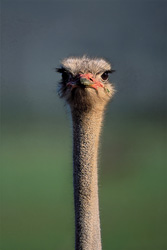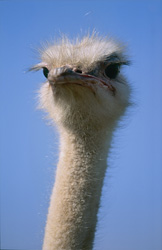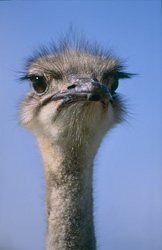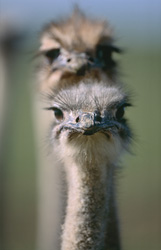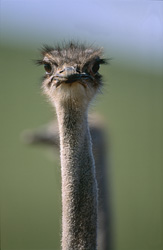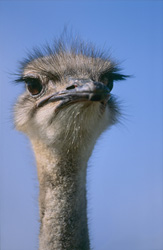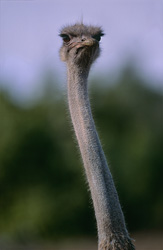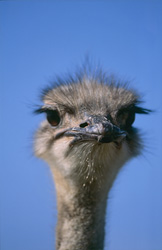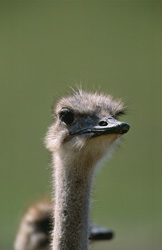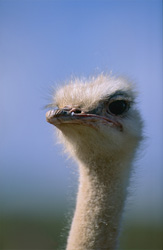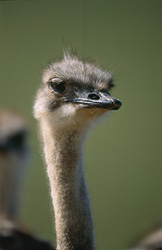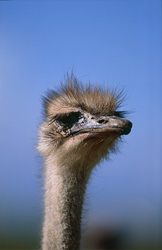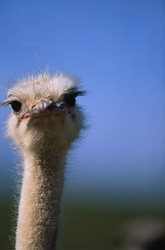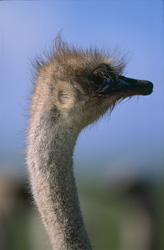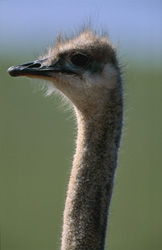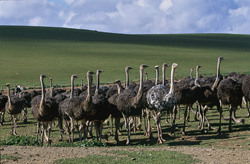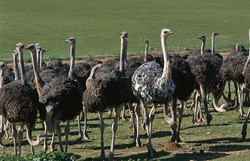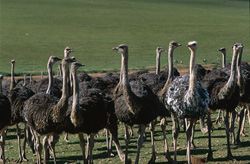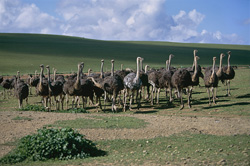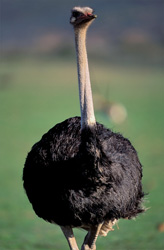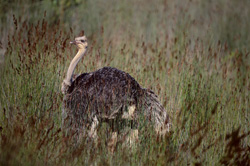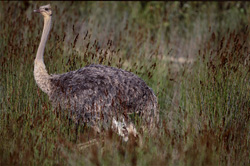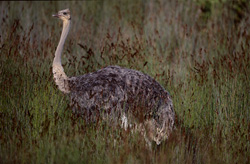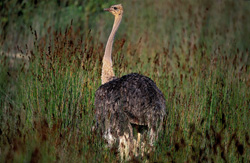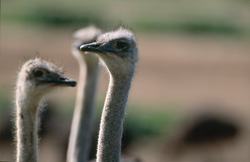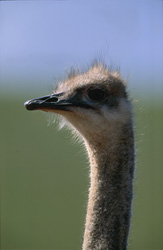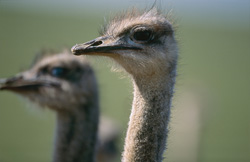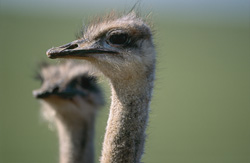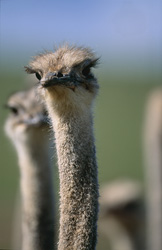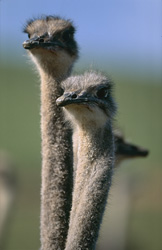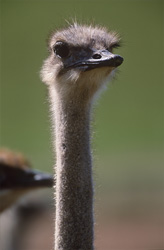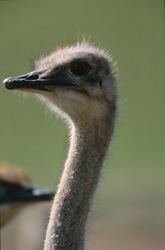Explore the African Ostrich – the largest living bird on Earth, renowned for its impressive size, speed, and majestic presence in the African savannas and natural habitats of South Africa.
The African Ostrich (Struthio camelus australis) is a fascinating flightless bird and the largest living bird on Earth. Characterized by its extraordinary size, impressive speed, and majestic presence in the African grasslands and the nature of South Africa, the ostrich is a remarkable example of Africa's fauna and plays a crucial role in the region's ecosystems. With its powerful legs, it can reach speeds of up to 70 km/h, making it one of the fastest two-legged animals on the planet. Its feathered plumage protects it from extreme temperatures and serves as camouflage in the open landscape. Ostriches are social animals, often living in groups with a complex social structure. Their diet primarily consists of plants, seeds, and occasionally insects, making them versatile feeders in the food chain. Reproduction is another fascinating aspect, where males court multiple females and build a large nest in which several eggs are incubated collectively. The ostrich also holds cultural significance in many African societies, symbolizing strength and endurance. Economically, ostriches are valuable for their meat, leather, and feather products. Overall, the African Ostrich is a remarkable animal of both ecological and cultural importance, continuing to attract the attention of scientists and nature enthusiasts worldwide.

